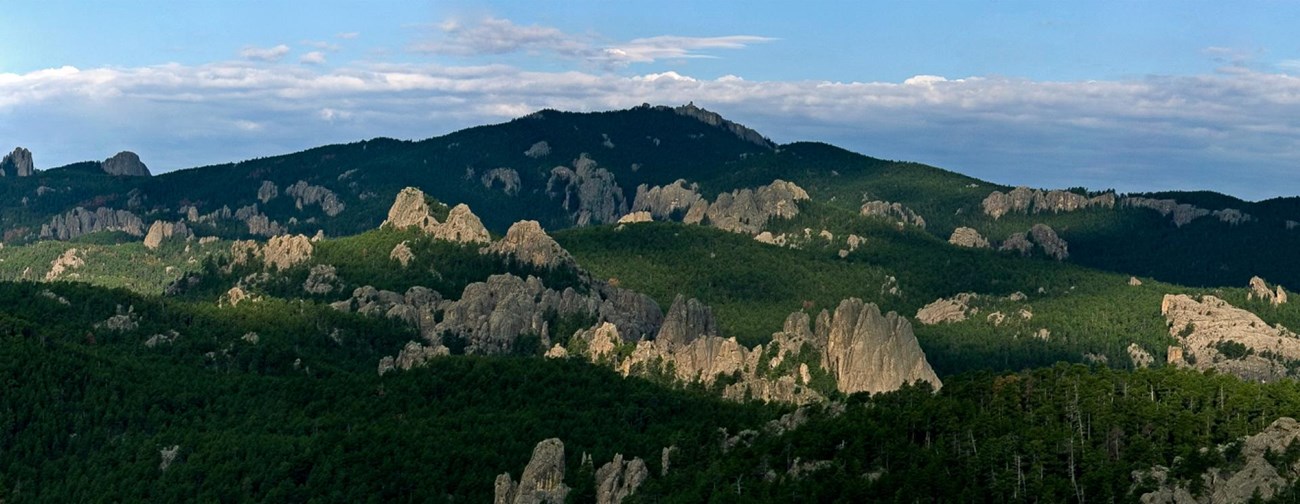Part of a series of articles titled 2023 Preservation Planning Grants Highlights.
Article
Fighting for the Black Hills: Understanding Indigenous Perspectives on the Great Sioux War of 1876-1877

Image courtesy of US Forest Service
Recipient: American Battlefield Trust
Amount: $121,000.00
Following the discovery of gold in the Black Hills mountain range, prospectors flooded into the hunting grounds and “unceded lands” of the Arapaho, Cheyenne, Dakota, and Lakota tribes living there, violating the terms of the Treaty of Fort Laramie, which set aside these areas as the Great Sioux Reservation in 1868. Spanning the modern-day states of Montana, Nebraska, South Dakota, and Wyoming, the reservation was established after the federal government sought to prevent future conflicts between the United States, the Sioux people, and the Sioux’s allies after a period of intense warfare in the northern Great Plains. But American promises to respect Indian sovereignty over the reservation were quickly nullified by civilian and government agents eager to exploit the natural resources on the reservation lands - actions that eventually pushed a large portion of the Sioux to armed resistance.
After a valiant, but failed attempt by Sioux chiefs Red Cloud and Spotted Tail to persuade the U.S. Government to honor the Fort Laramie Treaty in Washington, DC., the Sioux tribes fractured into two groups – those willing to relocate to smaller reservations in return for food and other federal aid, and “non-reservation” Sioux, that were willing to fight to maintain control of the Black Hills. In response, the administration of President Ulysses S. Grant ordered the US Army to force the defiant members of the Sioux tribes to accept the new, smaller reservations, and initiated a series of military campaigns from 1875-1876. These campaigns would lead to several major battles between US troops and the “non-reservation” Sioux, including the Battle of Little Big Horn. Known as the Great Sioux War (or Black Hills War), this conflict redrew the map of the northern Great Plains and ended only after a combination of US military occupation of hunting grounds, and harsh government policies by Grant’s administration, forced the final defiant members of the Sioux and their allies to surrender in late 1877.
A 2023 Preservation Planning Grant from the American Battlefield Protection Program to the American Battlefield Trust will allow the non-profit to work with State Historic Preservation Offices and Tribal Historic Preservation Offices in four states to research and identify the preservation priorities for multiple battlefields from the Great Sioux War, with an emphasis on including Indigenous perspectives at the forefront of the project.
Preservation Planning Grants are the American Battlefield Protection Program's broadest and most inclusive grant program, promoting the stewardship of battlefields and sites of armed conflict on American soil. In addition, ABPP administers three other grant opportunities: the Battlefield Land Acquisition Grant, Battlefield Restoration Grant, and Battlefield Interpretation Grant programs. This financial assistance generates community-driven stewardship of historic resources at the state, tribal and local levels.
Get Your Project Funded
Check out the American Battlefield Protection Program's website for more information about various grant offerings and eligibility.
Last updated: July 26, 2023
